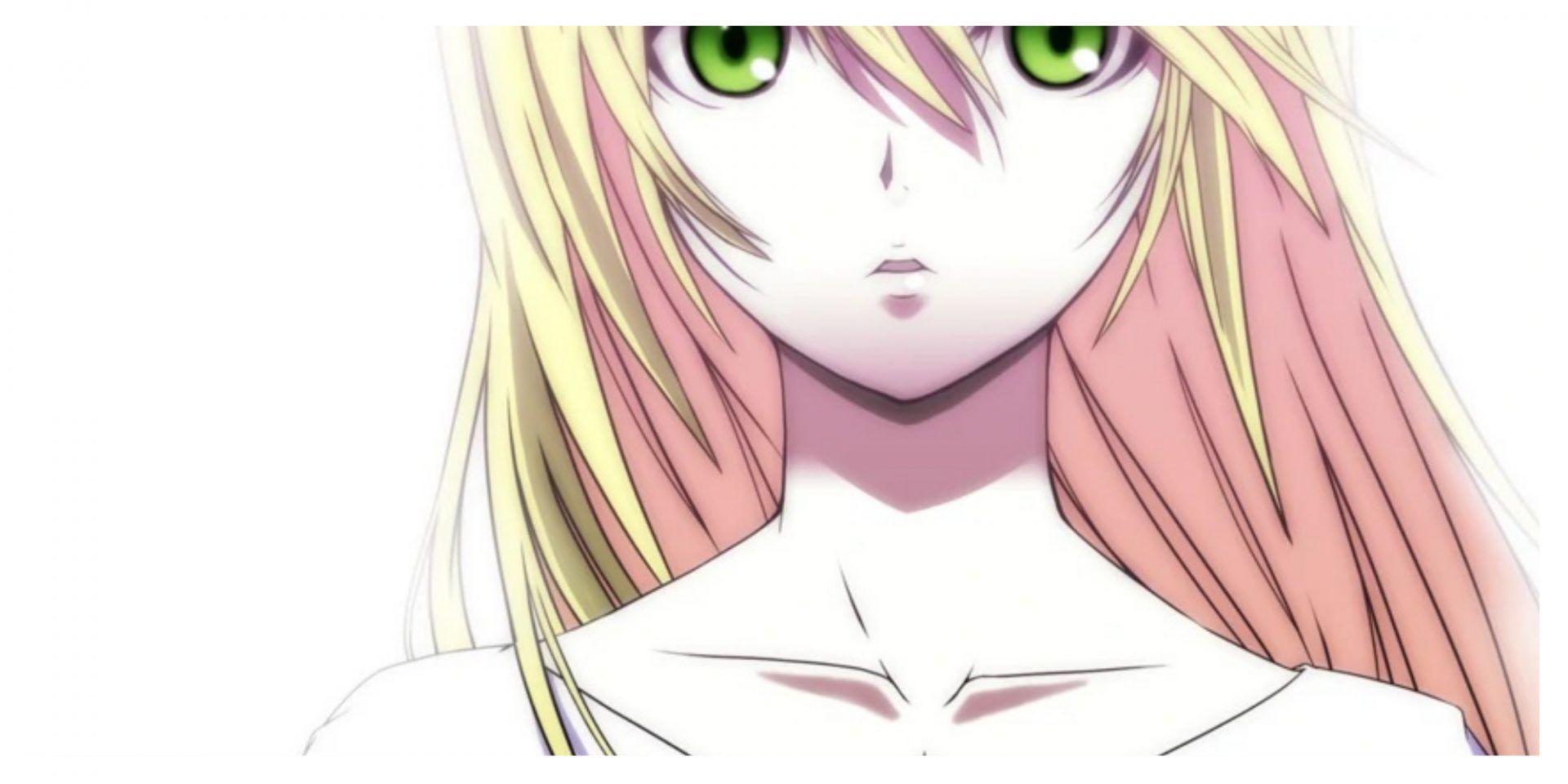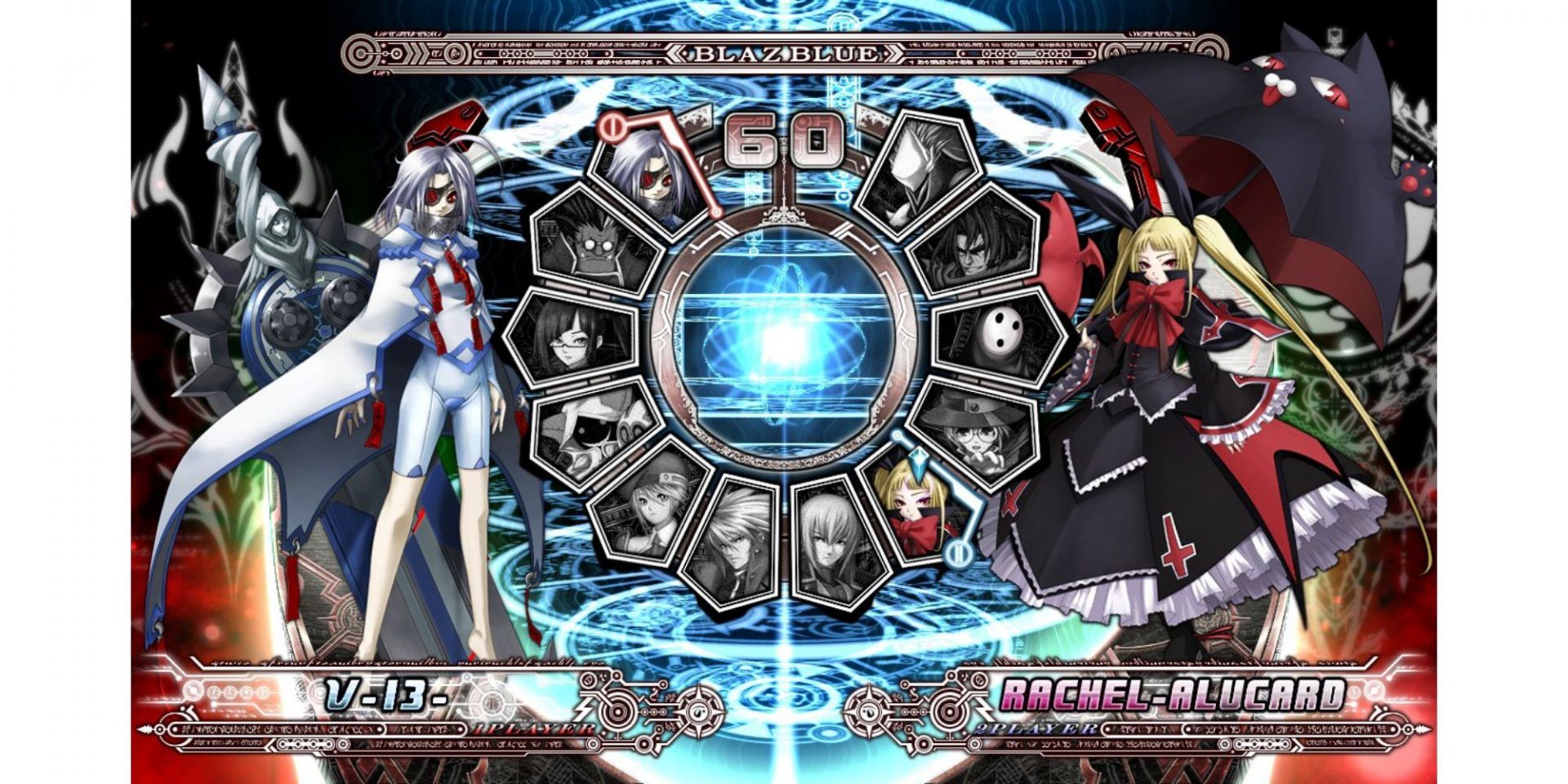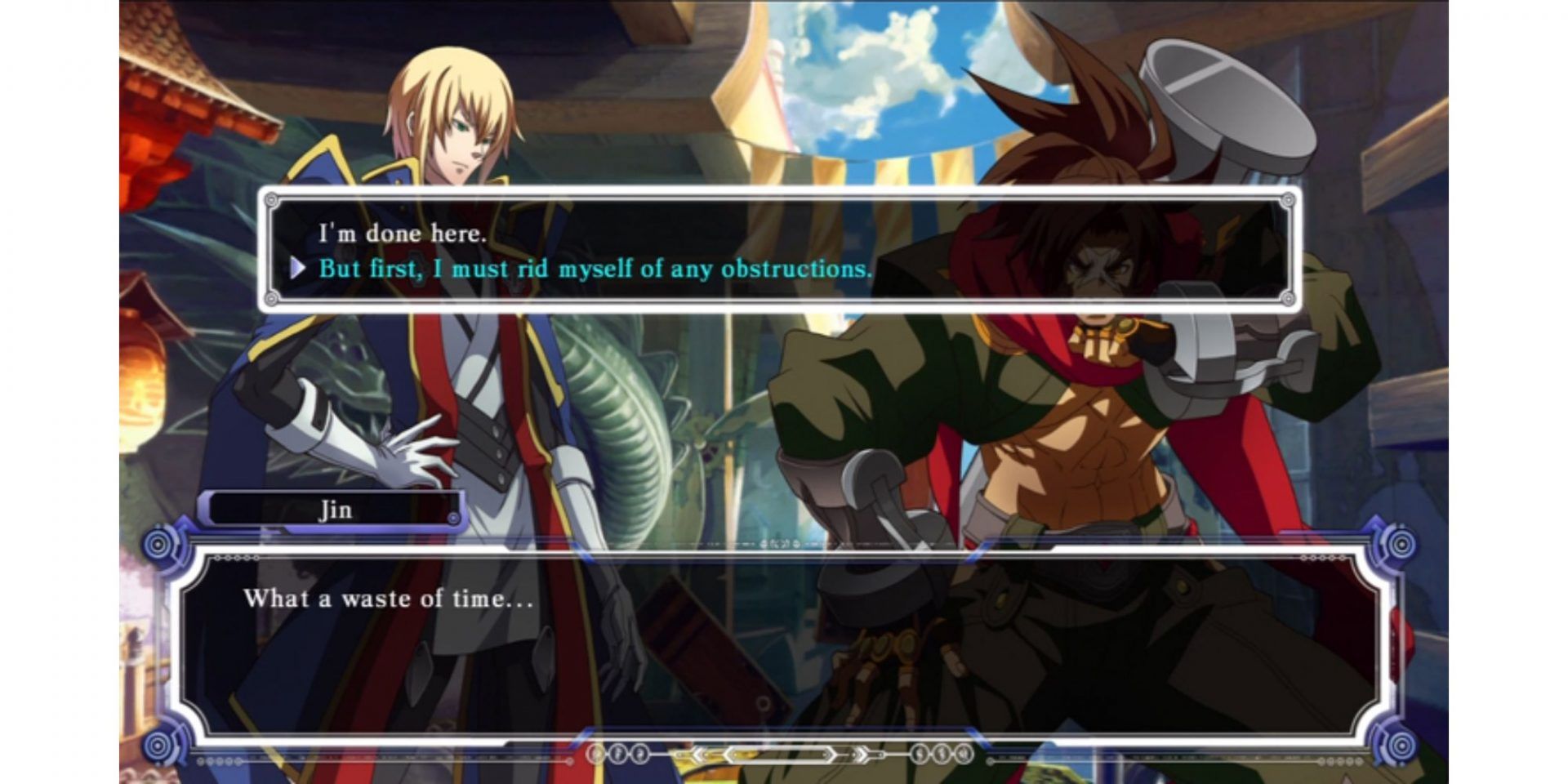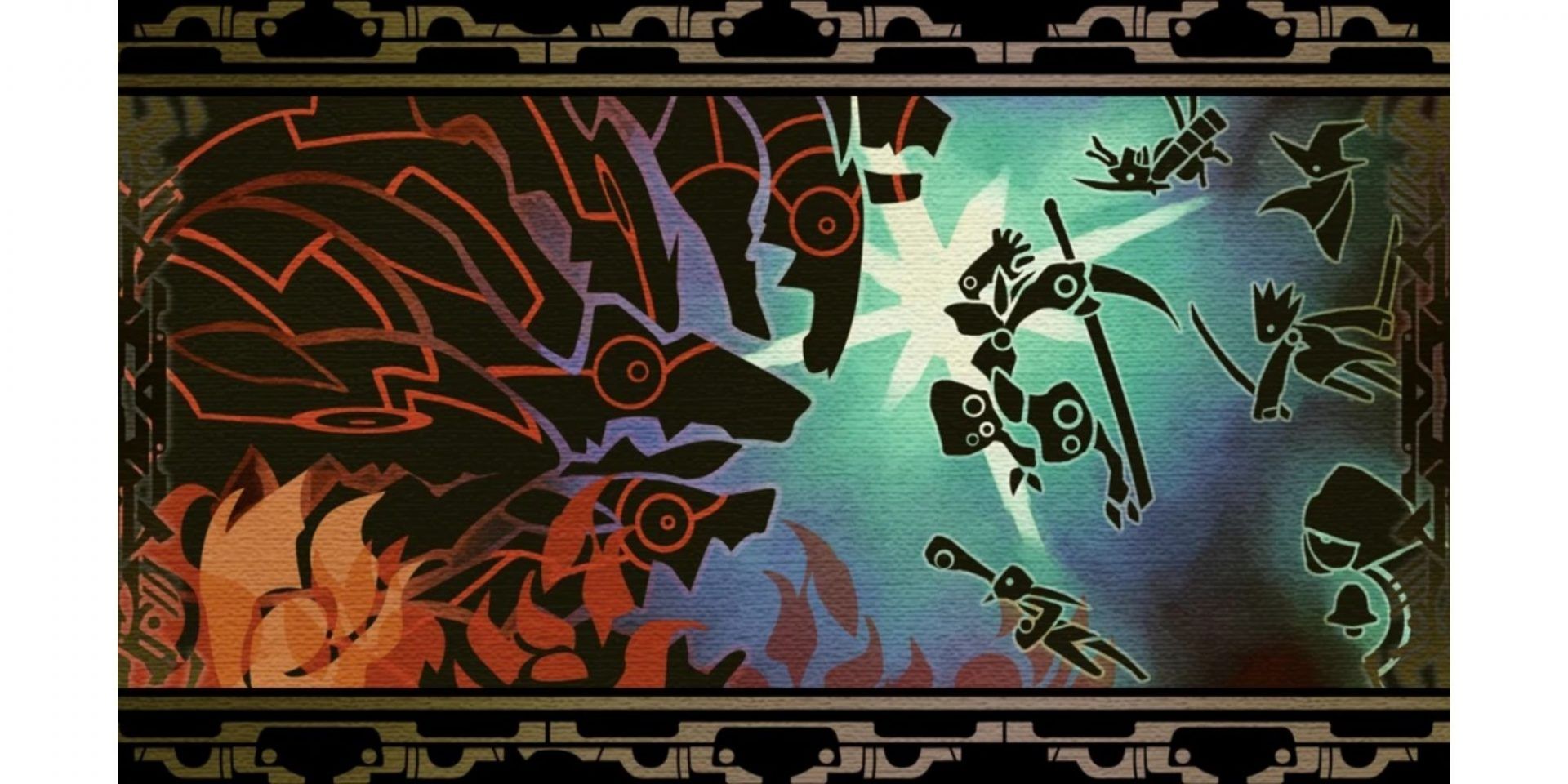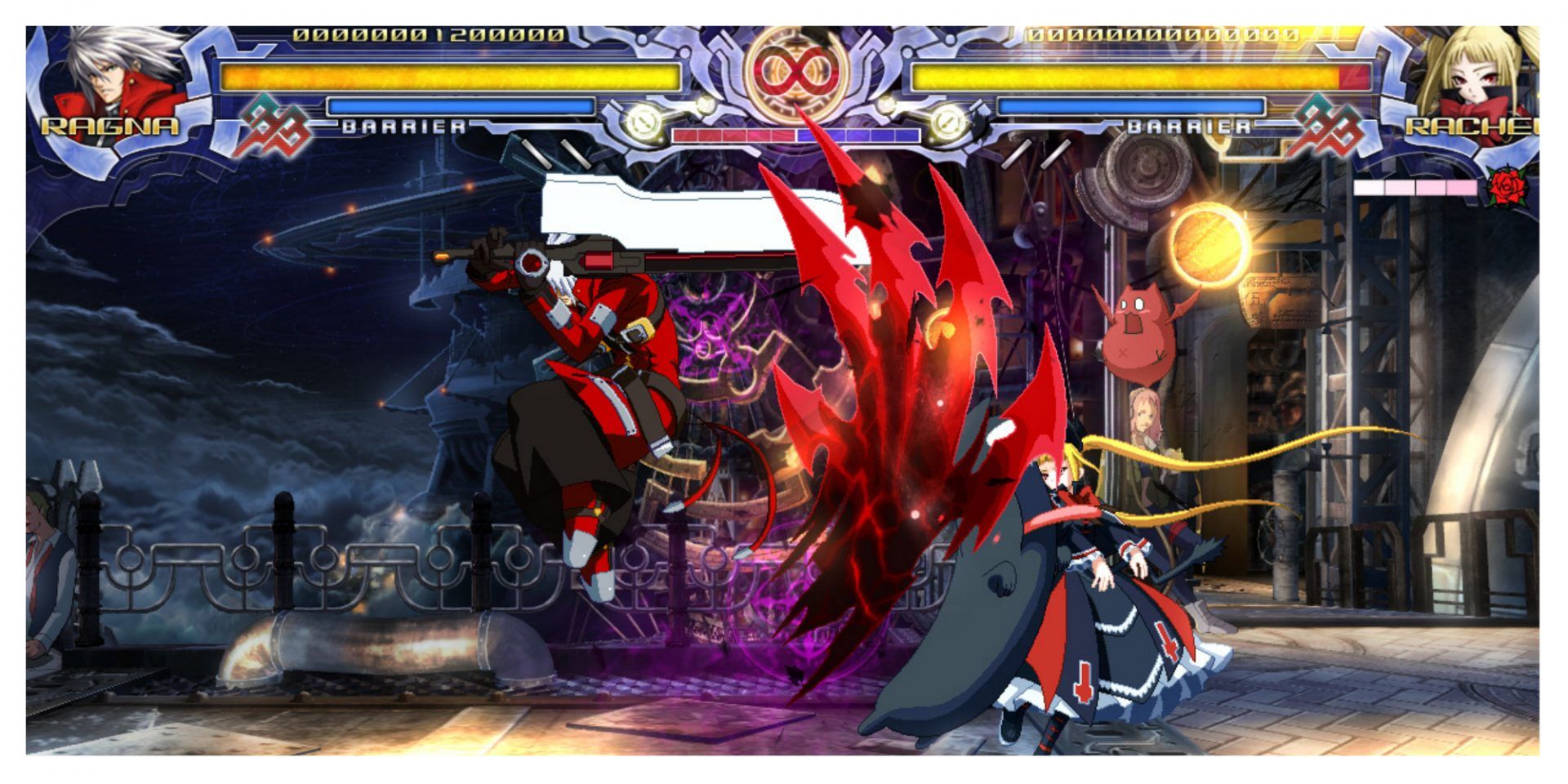Intrigue. That's what I am always looking for when I judge a video game story as a hit or miss. It doesn't have to sweep me off my feet, but lighting the fire of passion within me definitely requires a bit more effort and investment than just silly skits and emotional one-liners. BlazBlue: Calamity Trigger is one game that I believe fits the bill, even though narrative stories are not usually the main focus of the fighting game genre.
BlazBlue follows the traditional 2D anime-styled fighting shenanigans, as is expected from an Arc System Works franchise. You have a number of varied and formidable fighters, and a set of special moves that each one can use to devastate their opponent (mostly notably the two types of finisher, named Distortion Drive and Astral Finish). The characters themselves are unique and interesting enough, and every one of them feels like they have their own identity and style in battle. That's not the only thing that's special about the cast, though.
The real charm lies in the way these characters and their stories were integrated into the overall evolving narrative. Unlike, for example, Mortal Kombat 11 or Guilty Gear Strive, they are not presented as performers in a sort of movie. Instead, their attributes and unique traits are incorporated into the overall design philosophy of the game itself. The game puts you, the player, in front, leaving the keys to progress in your hands. You do this through winning (and losing) battles, identifying these design tricks, and overcoming them.
This kind of approach has been heavily experimental and is perhaps unconventional. However, with the advent of games that heavily utilize multiple perspectives such as 13 Sentinels, Octopath Traveler and the upcoming return of the classic Live A Live, I feel it's time to talk again about BlazBlue.
I want a fighting game story to keep me engaged. Not only in the moments when the characters are on-air during story cutscenes, but alongside every moment of their journey. Sometimes I don't even know why I should go out of my way to play as any character besides the few I'm comfortable with. Except because my favorites were nerfed or because somebody on YouTube said they are not tournament material. Even when I do get to try them out, it's hard to get a clear image of what should I do or how to have fun with a character in the way it was 'intended.'
Most fighting games, especially the likes of Under Night In-Birth and King of Fighters, usually have a barren story mode that can't be distinguished from any normal Arcade Mode. The usual random and non-canon cutscenes ensue between matches, along with a short epilogue that often gets shoved aside in favor of future narratives. Most of them are static as well, with little to no engagement or interactivity on the player's part, which can be considered rather dull by default (looking at you, Guilty Gear Strive, with your five hours of non-stop animated cutscenes).
In BlazBlue, everything is important and engaging, yet fragmented, like a prism. Each route and character journey is canon and happens alongside every other. There are even some cast members who are aware of the significance of the story and its strange arrangement and are trying to break free from it, adding an additional metafictional layer to the whole thing. Furthermore, you have the choice to go about the story in any way you want and piece the clues together, which made the entire process several times more fun than expected.
The choice system in Calamity Trigger is very clever. You don't only have to win every fight, but also to lose every fight in order to complete each route 100%. Then there's the need to finish some fights with Distortion Drives or Astral Finishes in order to progress to the true route, or at least unlock extra scenes that count towards completion. It works out thematically, because you simply don't know how to get out of this multi-faceted situation. It was created by science, magic, and other powers beyond your control.
You have to try everything, make mistakes, and even write down what you have learned. You have to experiment just like the characters, and feel the spiral of pain they were thrown into. Sometimes you will find characters who lament their failure to keep going, as well as others who are already used to it. It's always fun and engaging to be able to interact with a fighting game's narrative in more ways than the usual, particularly ones that are specific and unique to this story.
This vision wouldn't have worked out as intended without the writer Toshimichi Mori crafting the world so masterfully. The result is a very in-depth story that made us eager to try different characters, and even more eager to engage with the BlazBlue series' lore. Each character's individual plot felt like a window, showing an aspect of this fantastical realm of sealed creatures and mystical weapons. Usually, most fighting game storylines revolve around a single focal point, like the Soul Edge in Soul Calibur 6, or the Skull Heart in Skullgirls.
A creator plotting out the entire roadmap right from the off is very rare. Even taking that into account, however, Mori went the extra mile to incorporate multiple layers of intrigue and mystery into the design philosophy of BlazBlue itself. As such, there is always room for discussion about what could possibly happen, or what certain things mean. There are even many real scientific concepts (and beyond) were used as an inspiration for laying that sophisticated groundwork.
For example, the character Arakune is a scientist who has sacrificed almost everything in order to pursue his futile purpose of obtaining power. Other characters like Noel Vermillion have a similar design to a past story-relevant character, which makes Noel intriguing not just because of what she does but from a visual perspective as well. Some connections are directly stated, and others are hinted at.
That's another reason why I feel the starting point of BlazBlue was always the characters, and the creator designed the game system around their attributes and traits. You have Ragna the Bloodedge, the protagonist who is in a rivalry with his arch-nemesis Jin Kisaragi. Ragna also has meaningful connections to practically every other cast member, though, and they're all explored. Whenever you look, you will find an intense amount of depth and love that is practically non-existent in the modern fighting scene nowadays.
The way I see it, it's the responsibility of a fighting game (or video games in general) to get me out of my comfort zone. More importantly, a title should allow me to have fun with everything it has to offer. In BlazBlue, I strongly feel that was the case. Each character's moves, motivations, and route choices (even gag scenes) strongly reflected their worldview and foreshadowed the addition of further relevant characters in future entries. Here you can at least have a general idea of who and what to expect from upcoming entries, in terms of playable characters and story progression, instead of what's popular or trendy from the publisher's perspective.
There are not many creators now who would go the extra mile to establish a new series or a worldview, not just in the fighting game scene but in the industry in general. Many sometimes seem like they do the bare minimum and decide the rest according to fan reception, but BlazBlue: Calamity Trigger decided to go all out from the start and I appreciate that a lot. I intended to keep spoilers to a minimum in this article, so there are many many surprises waiting for those who jump into this fascinating and involved adventure.

